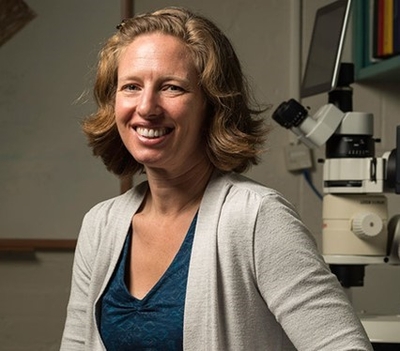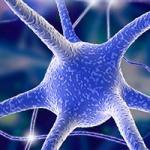
Research Topics
The goal of our laboratory is to investigate how neuronal circuits in the early visual system encode and process visual information during healthy operation and in disease states including low vision due to eye or brain damage (as in stroke), visual disruptions associated with schizophrenia, attention deficits, and hypersensitivity associated with autism spectrum disorder. Our research consistently links structure and function, e.g. exploring how particular cell types are wired together to establish specific components of visual perception. Current efforts focus on measuring and manipulating identified circuits in behaving subjects to assess neuronal contributions to active vision. The lab utilizes a combination of experimental methods including electrophysiology, optogenetics, and imaging in subjects performing visual discrimination tasks in conjunction with neuroanatomical and computational analysis approaches. Current research questions include:How do reciprocal circuits connecting the visual thalamus and visual cortex contribute to visual discrimination and attention and are these circuits disrupted in attention deficit disorder and/or autism?How does activity in thalamo-cortico-thalamic circuits mediate training-induced vision recovery following visual cortical stroke?What alterations in retino-thalamo-cortical circuit structure and function generate visual deficits observed in schizophrenia?How do early visual circuits incorporate contextual information during active, natural vision?At the core of our research is a commitment to honing and applying novel technologies to advance our understanding of neuronal structure and function. We continue to pursue novel methodological approaches, including chronically implantable dense multielectrode arrays, strategies for optimal circuit manipulation, and methods for unrestrained, natural vision studies performed in the laboratory. These efforts enable us to continue pushing the boundaries of what is possible in systems neuroscience to further our understanding of visual system structure and function in health and disease.
Biography
Dr. Briggs received her bachelor’s degree in biology from Dartmouth College and then completed her PhD in biology at the University of California, San Diego working in the lab of Dr. Ed Callaway at the Salk Institute. Her postdoctoral training at the University of California, Davis under the mentorship of Dr. Marty Usrey, along with Drs. Barbara Chapman and Ron Mangun, was supported by an NRSA fellowship and then a Pathway to Independence Award (K99), both from the NEI. She established her independent laboratory first at the Geisel School of Medicine at Dartmouth and then became a tenured Associate Professor in Neuroscience and Brain and Cognitive Sciences at the University of Rochester. Her independent lab has been funded by the NIH, the National Science Foundation, and the Whitehall Foundation. In 2024, Dr. Briggs joined the NEI as a Senior Investigator and she is also a 2024 NIH Distinguished Scholar. She holds an Adjunct Professor position at the University of Rochester and an adjunct appointment with the National Institute of Mental Health (NIMH).
Selected Publications
- Mai S, Murphy AJ, Hasse JM, Briggs F. Dual parallel stream-specific and generalized effects of corticogeniculate feedback on LGN neurons in primate and carnivore. Nat Commun. 2025;16(1):3380.
- Yang J, Huxlin K, Briggs F. Differential Impact of Retinal Lesions on Visual Responses of LGN X and Y Cells. J Neurosci. 2025;45(23).
- Shah S, Hembrook-Short J, Mock V, Briggs F. Correlated variability and its attentional modulation depend on anatomical connectivity. Proc Natl Acad Sci U S A. 2024;121(35):e2318841121.
- Adusei M, Callaway EM, Usrey WM, Briggs F. Parallel Streams of Direct Corticogeniculate Feedback from Mid-level Extrastriate Cortex in the Macaque Monkey. eNeuro. 2024;11(3).
- Scott H, Murphy AJ, Briggs F, Snyder AC. Using Generative Models of Naturalistic Scenes to Sample Neural Population Tuning Manifolds. Eur J Neurosci. 2025;61(7):e70088.
Related Scientific Focus Areas
This page was last updated on Friday, August 1, 2025
